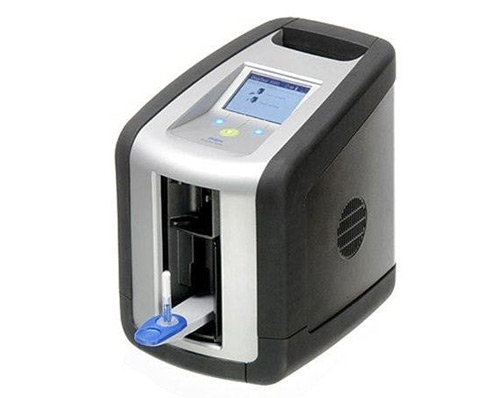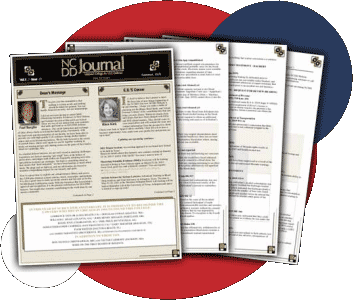- The ABA’s Concise Guide to Lawyer Specialty Certification
- The Benefits of a Lawyer Being a Board-Certified Specialist
- Benefits to Become Board Certified - ABA Video
- Board Certified Members
- How to Become Board Certified in DUI Defense Law
- Apply for Certification
- Apply for Re-Certification Renewal
- Board Certified Senior Specialist
- Rules Governing Board Certification
- Preparing for the Exam
Drugged Driving and the Future of Drug Testing: The Draeger Drug Test 5000
Posted on January 25, 2022 in Uncategorized
 By Joe Bernard and Erica Bruno
By Joe Bernard and Erica Bruno
With the rise of arrests for operating under the influence of drugs across the United States, reliable evidentiary testing for drug use has been highly sought by law enforcement for the detection and prosecution of drugged driving crimes. In response, Draeger, Inc. has developed the Draeger DrugTest 5000 (DDT5000), an oral fluid test to assist law enforcement with determining whether an individual has consumed drugs. The device is designed to test for the presence of seven drugs, including amphetamine, methamphetamine, cocaine, opiates, benzodiazepines, delta-9-tetrahydrocannabinaol (THC), and methadone.
The DDT5000 is a type of Lateral Flow Testing (LFT) or "point of collection" testing. An LFT is a rapid type immunoassay testing method designed to detect the presence of a drug in a biological sample without the need for specialized equipment. One of the most commonly known types of an LFT is a home pregnancy test.
The DDT5000 specifically tests oral fluid. Oral fluid testing has become a popular method of testing based upon the ease of collection that can be done close in time to driving, allowing for better correlation between signs and symptoms of impairment observed at the time of the arrest as compared to drugs detected in a biological sample collected later.
The DDT5000 consists of four main parts, the analyzer, printer, keyboard and test cassette that contains the sample collector. The sample collector is placed into the mouth and moved between the gums and cheek. When sufficient volume is collected, an adequacy indicator turns blue to signal that enough sample (approximately 150-200 μL) has been collected. The test cassette and a buffer cartridge are then inserted into the analyzer. The testing is complete in eight minutes. Results are initially displayed on the instrument as positive or negative and can be printed.
The DDT5000 is designed to be used at the roadside or after arrest, much akin to the portable breath test (PBT) devices used for alcohol testing. Unlike the PBT, the DDT5000 does not provide any numerical reading, limiting the utility of the devices to a roadside "screening" as opposed to a quantitative device. Even a positive result still requires confirmatory testing1. The DDT5000 only provides a qualitative result of a positive or negative sample, and Draeger, Inc. states in its manual that in order to obtain a confirmed analytical result, a more specific alternate chemical method is needed, such as Gas Chromatography/Mass Spectrometry. Thus, Draeger suggests that a second saliva sample be obtained and analyzed by an accredited laboratory.
Although the DDT5000 has not yet been formally endorsed by the federal government for roadside or evidentiary drug testing, it appears from an April 2021 National Highway Traffic Safety Administration (NHTSA) report that it may soon be a recommended device for law enforcement. In April 2021, NHTSA released a report of its evaluation of multiple different roadside and evidentiary drug testing devices, including the DDT5000. In its report, NHTSA found the DDT5000 to meet its standards for device performance specifications. NHTSA device performance specification starters are based upon the Roadside Testing Assessment (ROSITA) and the Driving Under the Influence of Drugs, Alcohol and Medicines (DRUID) project. In its report, NHTSA supports its use of these standards by explaining that the ROSTIA and DRUID studies were the first large-scale evaluations of using oral fluid drug testing in the field and recommended performance criteria for oral fluid drug-testing devices designed for use in the field (point-of-contact testing).
Both studies made recommendations for sensitivity, specificity and accuracy in order for an oral fluid test before law enforcement could have confidence in the result. Sensitivity, specificity and accuracy determine how well a test works; sensitivity refers to a test's ability to avoid a false negative while specificity refers to a test's ability to avoid a false positive, both of which are then combined to determine the test's accuracy. ROSITA recommends greater than 90 percent sensitivity and specificity, and greater than 95 percent accuracy, and the DRUID project recommends greater than 80 percent sensitivity, specificity and accuracy. (Schulze et al., 2012; Viviane et al., 1999).
After analyzing the DDT5000 under five different phases to assess its accuracy, reliability, performance to specification, susceptibility to interference, and resistance of the consumables to extremes of temperature and humidity, NHTSA claims that the DDT5000 meets both the ROSITA and DRUID criteria. However, to no one's surprise, the device is not perfect, and false positives were observed. During the interference testing phase, the DDT5000 had seven false positives when testing samples that did not contain the target drug. Three were for THC and occurred one time each when the negative saliva was mixed with beer, toothpaste, and coffee. The device also had false negative results when the sample containing the target drug was mixed with milk, resulting in a false negative for THC, and another false negative when mixed with chewing tobacco, resulting in a false negative for opiates.
Although law enforcement may begin adopting new oral fluid testing devices like the DDT5000 to gather evidence to support drugged driving charges, with the support of the NCDD, there undoubtedly will be Frye and Daubert challenges to any admission of a positive result at trial based upon this very new method of testing.
1. As many of us are aware, the mere presence of a drug in a person's system does not constitute impairment nor is it indicative of the quantitative amount of a drug in a person's body.
Find an Attorney
Enter your city, state, or Zip code below to locate a qualified attorney who has demonstrated a commitment to defend those accused of DUI and related crimes.








